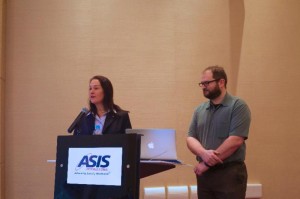The Ammonium Nitrate (AN) explosion in West, Texas on April 17, 2013, which killed 14 people and wounded 200 others, destroyed and damaged the town’s 700 homes and left a crater 93-ft wide and 10-ft deep.
The Chemical Safety Board released findings of an investigation on the explosion on April 22, 2014. The chairman of the Chemical Safety Board, Rafael Moure-Eraso told reporters that the Board found “at all levels of government, a failure to adopt codes to keep populated areas away from hazardous facilities.” There are 1,351 that store AN, and communities are just beginning to collect data on exactly where the material is stored and processed and how close this is to homes and schools.
While no other single chemical has caused more harm, there is very little regulation of AN. Existing regulations include:
- Bureau of Alcohol, Tobacco, Firearms, and Explosives regulates it as an explosive, but the rules do not apply when the material is used as a fertilizer.
- OSHA does have some regulations for AN, but it does not prohibit storage in wooden bins, and requirements for sprinklers don’t kick in until after 2,500 tons are on-site. The West, Texas explosion had between 40 and 60 tons on site with an additional 100 tons on rail cars adjacent to the site.
- The EPA has a rule to prevent environmental damage from hazardous substances, but AN is not a trigger chemical.
- Texas does not have a statewide fire code and actually prohibits smaller counties from adopting a fire code. There are no siting regulations or requirements for AN near homes, schools, and hospitals.
Agencies, such as the EPA are looking at a number of policy options to address chemical safety.
Click below for additional details on the results from the West, Texas investigation and associated findings.
The ASIS Egypt Cairo Chapter’s first meeting in 2014 had Stone’s own Arturo Montalva present as the guest speaker.
Below is a brief summary of the program from the latest ASIS Middle East Dynamics Newsletter.
“The Egypt Cairo Chapter held its first meeting of 2014 on March 20 at the newly opened Le Meridien Hotel at Cairo International Airport.
The guest speaker at the occasion was Arturo Montalva from Stone Security Engineering, New York, an internationally experienced structural engineer specializing in blast and seismic assessments. The topic of his presentation was “Explosive Threat: How to reduce your vulnerability.” The meeting was attended by thirty security professionals representing a wide range of companies and organizations as well as the diplomatic community. It was hosted by Al Thuraya Counsultany Inc, followed by a lunch sponsored by the Le Meridien Hotel.”
Arturo was grateful for the opportunity and looks forward to visiting with security professionals on his next visit.

ASIS Regional Vice President, North Africa, introduces guest speaker, Arturo Montalva
An after-actions report from GridEx II was released on March 12, 2014. The North American Electric Reliability Corporation (NERC) held its second grid security exercise, GridEx II on November 13th and 14th. That exercise brought together over 2,000 participants from over 234 organizations from groups all across the United States, Canada, and Mexico and was the largest exercise to date for the electricity industry.
The purpose of the event was to help utility companies understand who they needed to communicate with during an attack, and where vulnerabilities lay with regard to physical and cyber security.
The simulated event focused on cyber attacks on the utility network combined with physical attacks, which caused degraded control networks, decreased reliability, and increased public safety risks. Participants received sequenced email messages with detailed scenarios throughout the exercise.
Highlights and recommendations from report included:
- Increase information sharing and establish formal and multiple communication pathways for rapid assessment and response both within the organization as well with relevant stakeholders.
- Enhance NERC coordination using the Electricity Sector Information Sharing Analysis Center (ES-ISAC) conference call capabilities to be able to accommodate all appropriate staff members. This was highlighted as the existing system didn’t have the capacity to accommodate all participants.
- Simultaneous attacks (physical and cyber) provide challenges in areas of communication, resource requirements, and recovery. A specific finding is the need for additional transformers as they require long procurement lead times.
- Incident response improvement to ensure critical functions continue to operate as well as establish procedures to collect forensic data (both physical and cyber) following an event.
The exercise was found to be very helpful to all participants with learning opportunities for both cyber and physical incident response systems.
GridEx III is scheduled to occur in November, 2015.
Sources
New York Times
NERC
GridEx II report
